Wednesday, 15th October.
At 7.20 am I go to meet the chief in the village.
My host in front of the beautiful mountains, for once clear of cloud.
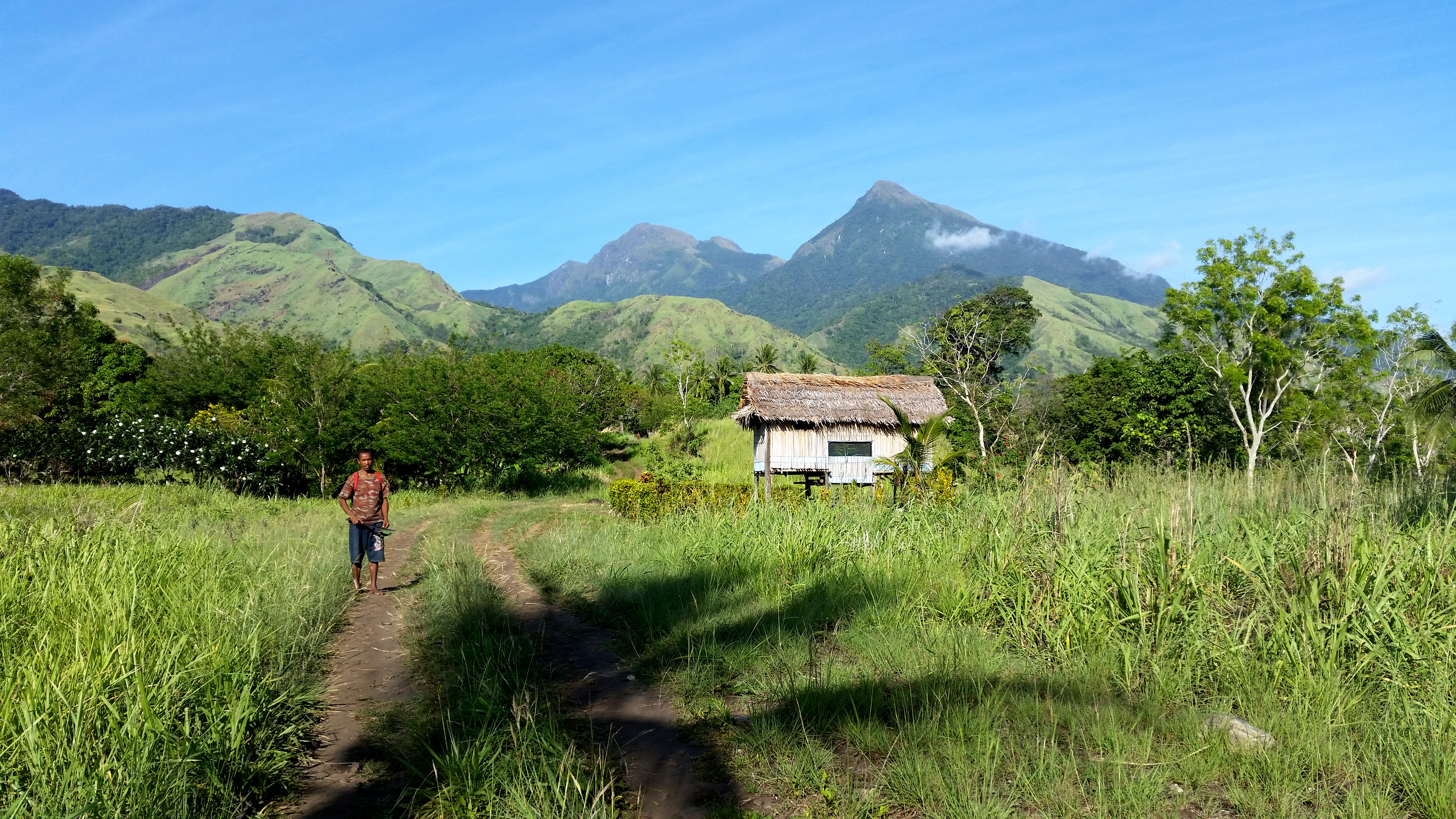
The meeting with the village chief turns out to be a village council.
The village chief is in the yellow T-shirt and red cap. The man in yellow and blue is in charge of the census register.
You can also see my chair and my bilum. Photo taken looking north.
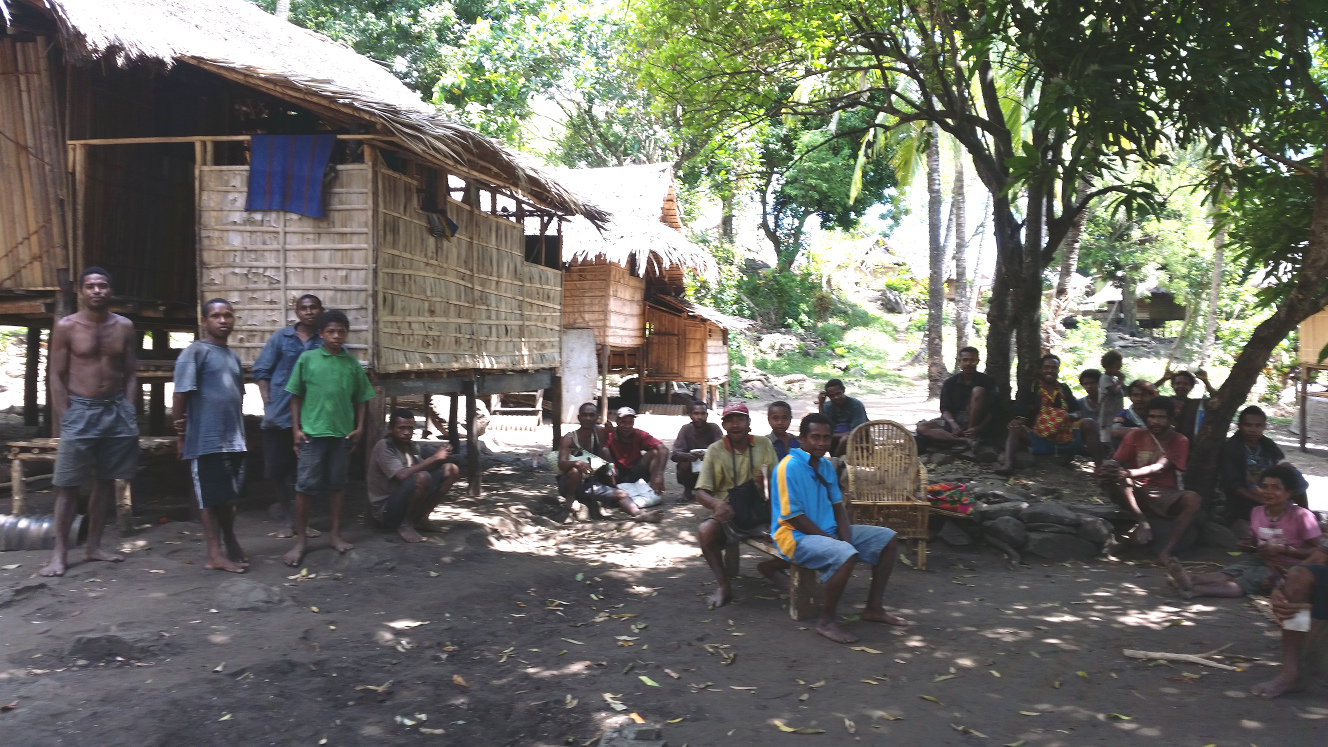
Seated, left, is my host. Standing behind him is one of the two youths who had accompanied Malcom et Lionel Smith en septembre 2000.
Photo taken looking south.
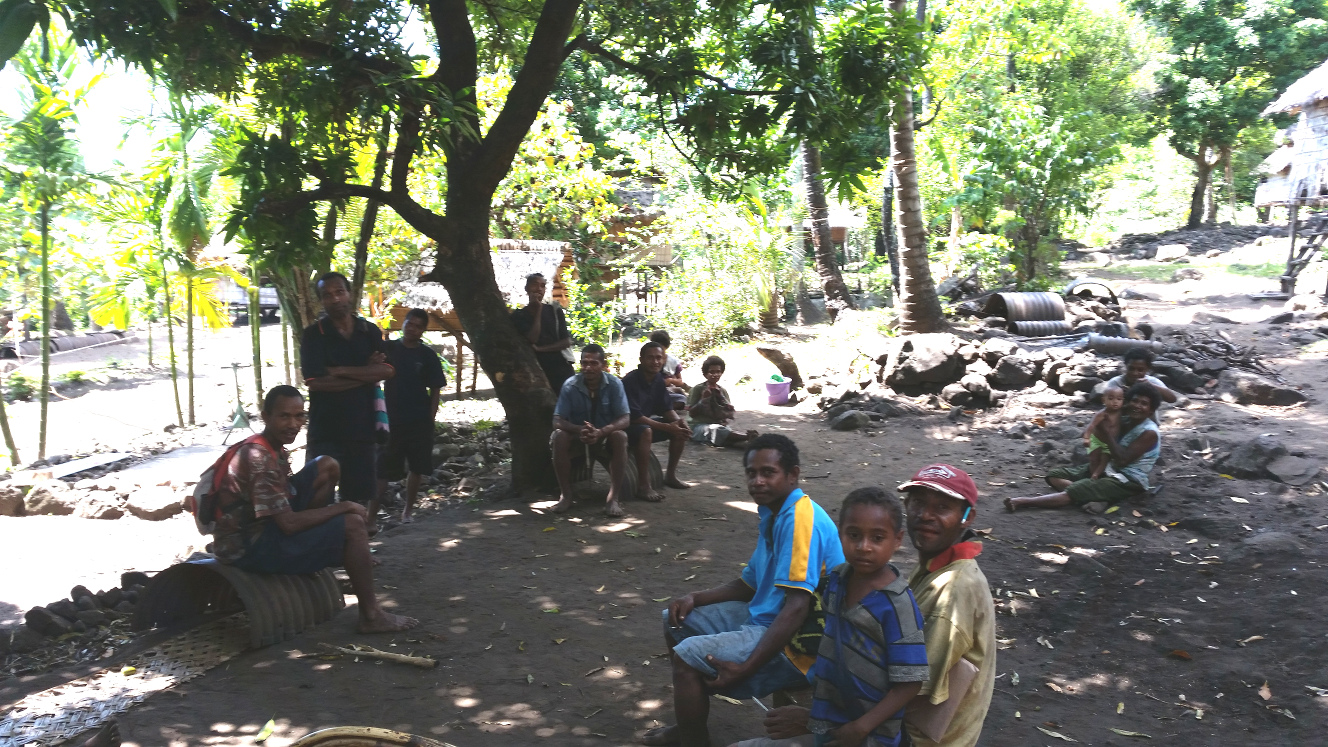
That's him on the right of this picture taken by Malcolm Smith in his expedition to Wakonai in 2000.

He is a farmer in a village in the mountains. I made an appointment for the next day to take his picture in front of a citrus wakonai but he returned to his village and I did not see him again.
The meeting lasted an hour and a half and was mainly questioning my motivation for coming here, and haggling over a money-making racket.
No one can come to this village without giving their precise reasons. As usual I told the truth, it might have been a mistake.
Having said that I was looking for the wild citrus that Australians collected in 2000, a young man (who is now 14 years older) gets up and comes back 30 seconds later with a branch and an immature fruit.
This is my first contact with C. wakonai.

After deliberation they announced that I can study the plant and have as many seeds I want for 300 kina. No luck I have only 200 kina. ( £50. €66, US$77) Re-deliberation, and they accept 200 Kinas. Later, I learned how it works:
When someone arrives in this village they are not allowed to do anything without paying.
To walk in the forest 500 K.
Take a picture of plants 300 K.
Taking pictures of animals 400 K.
Climb up the mountain is 1000 K.
And so on ...
Evidently for 200K I will not be allowed to go in the forest or in the mountains. I will have to work on the two plants found in the village.
They send two young people in the mountains to bring fruits.
During this meeting, I hurt my foot on one of these steel half cylinders dating from the war.
On the way back we go to see a C. wakonai near the school.
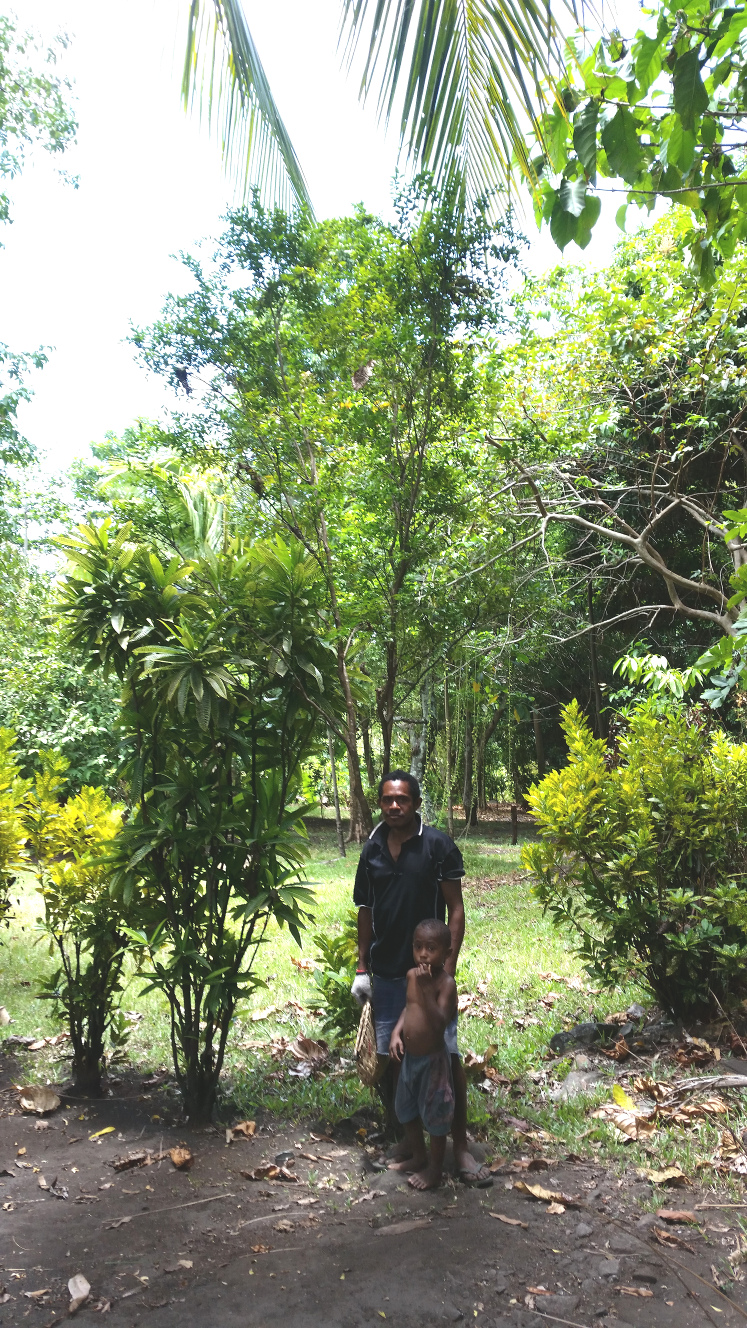
Approximately 5 metres tall.
Back at home, I take pictures of the fruit and branch.
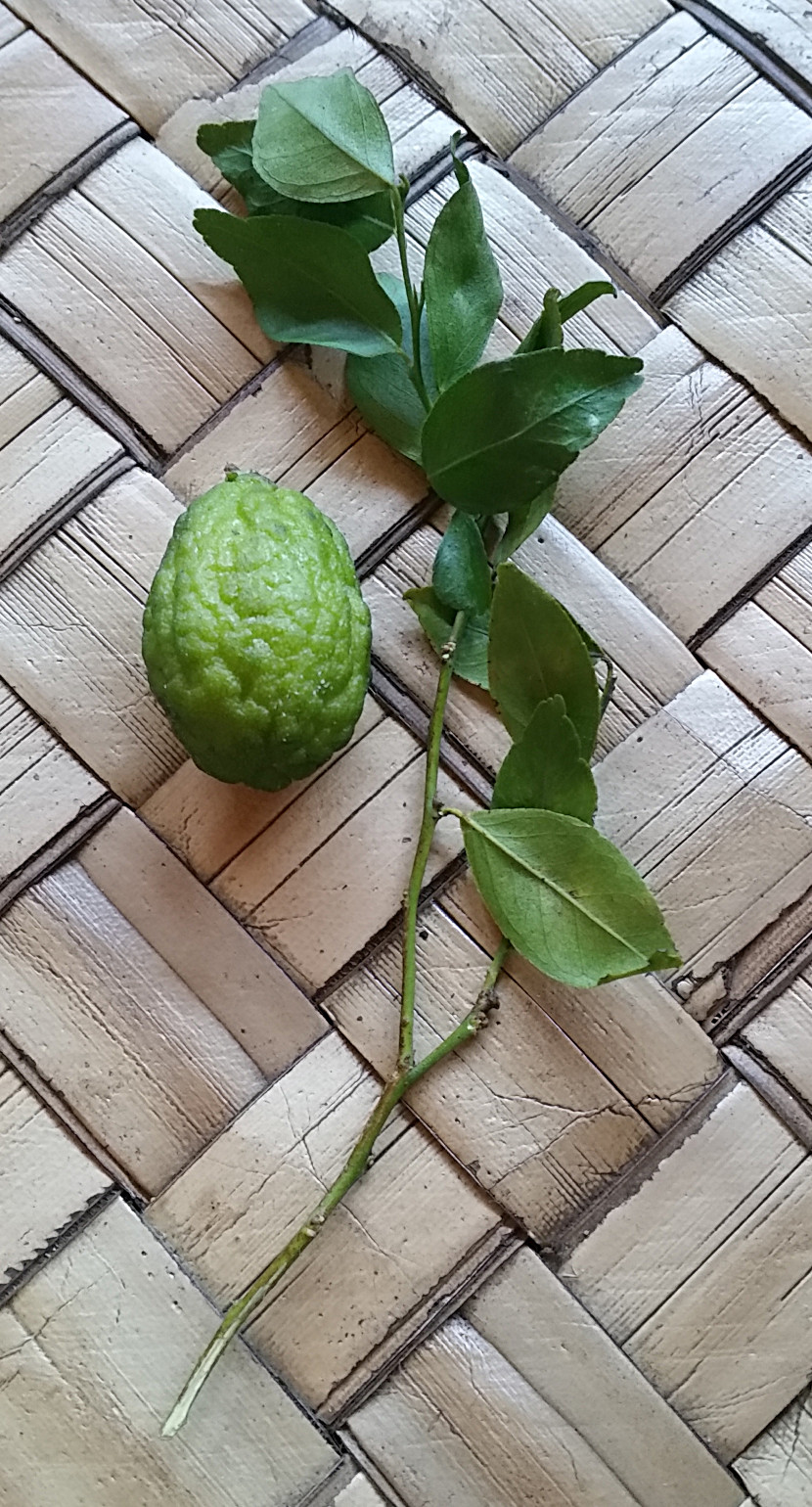
I will keep the fruit as long as possible to give the seeds a chance to mature. But when I opened the fruit there were only two small seeds and they have not germinated.
Having no more money to pay for the return journey, we decided to go to Vivigani village to meet the owner of a dinghy which is soon going to Alotau. I ask if he can take me and get paid in Alotau after I have been to the bank. He accepts. Departure is scheduled for Friday 17 at dawn.
On the way I try to send an email because I was told that sometimes you can receive from an aerial that is located on a hill in the north of the island but it works only occasionally. Actually, the e-mail was sent on the 19th when near Fergusson.
On the way there is a house with one of the few traditional local ladders. All the others are made of metal sheets abandoned after the war.
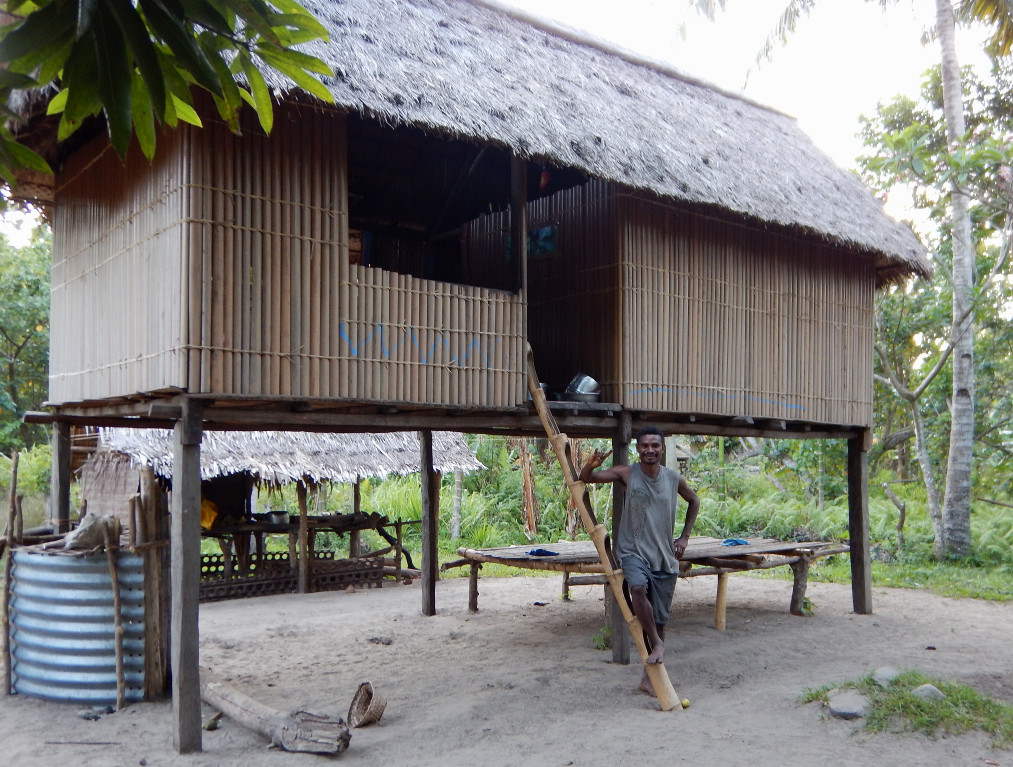
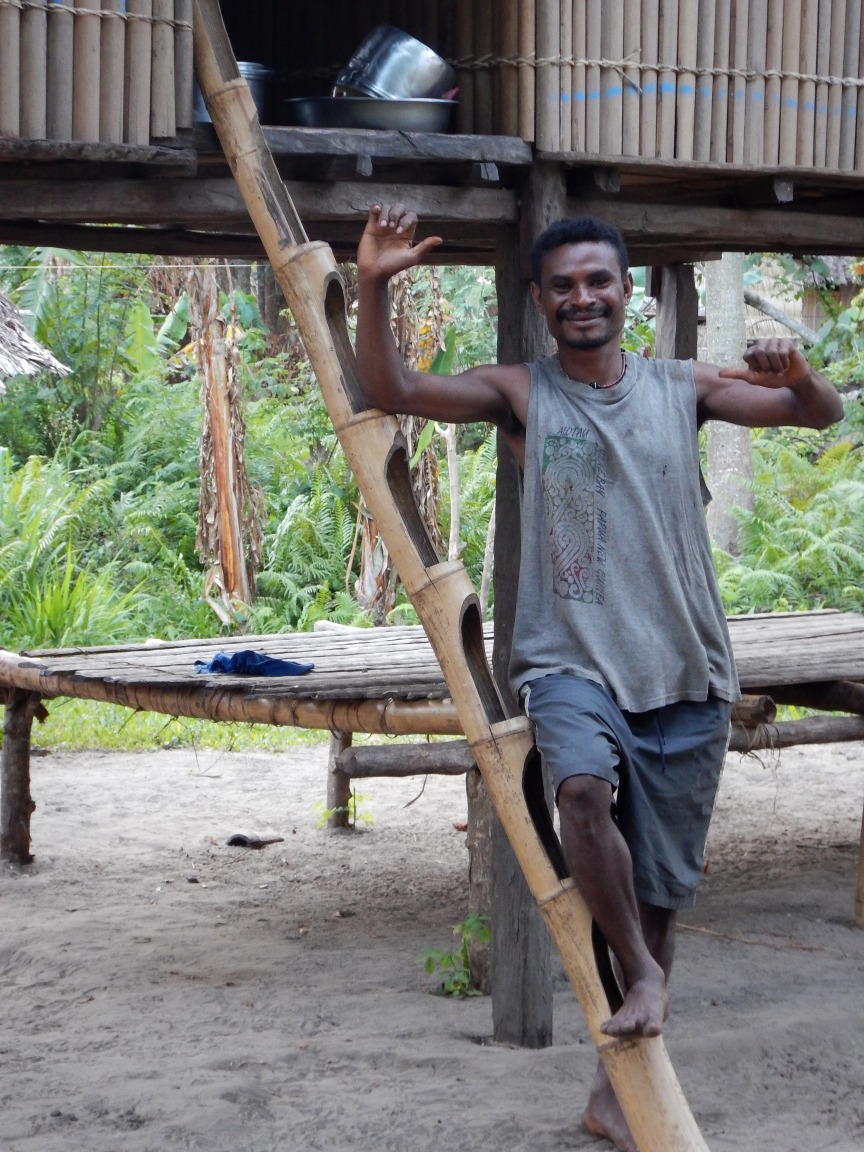
We miscalculated and found ourselves returning to Vivigani without a lamp, on a night without a moon. A struggle!
|